The unit was a detached fighter squadron (OIAE) of the Baltic fleet.
The aircraft wa s/n .2171, built in January 1941, the 71th MiG-3 produced after 100 MiG-1s (the initial digit 2 represents the type I-200, not 200 produced planes).
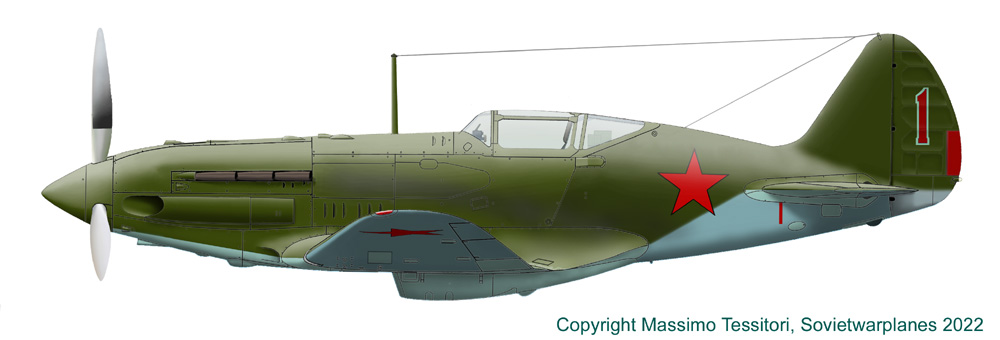

While it's not sure that it was from the aircraft of the previous photo (the light blue repainting on the stabilizator looks different), this image shows that the fuselage was painted in the factory before mounting the tail surfaces and fillets.
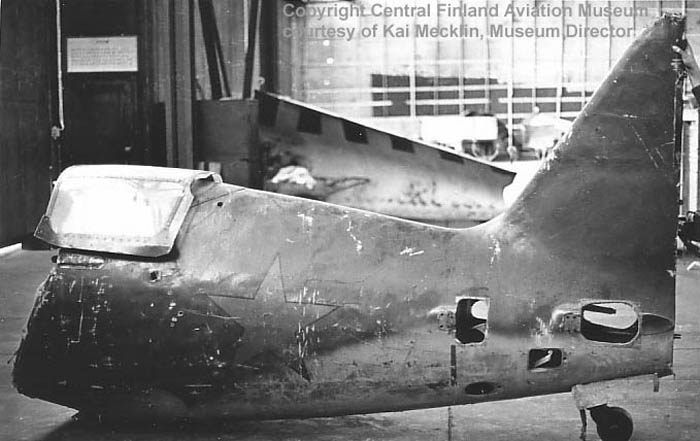

More recent images of the remains of the fuselage. The difference in shade of green between the metallic parts and the wooden part of the fuselage is still noticeable after 70 years. A difference in shade is visible also between the light blue under the fuselage and under the rudder.
Note the yellowish shae of the nitroputty visible through the scratches on the paint on the wooden part of the fuselage, that was covered by a layer of glued fabric.
Note also the somewhat damaged thin trasparent nail on the rear of the sliding hood.
Image by Antti Lappalainen at Finnishmuseum, depot of Vesivehmaa
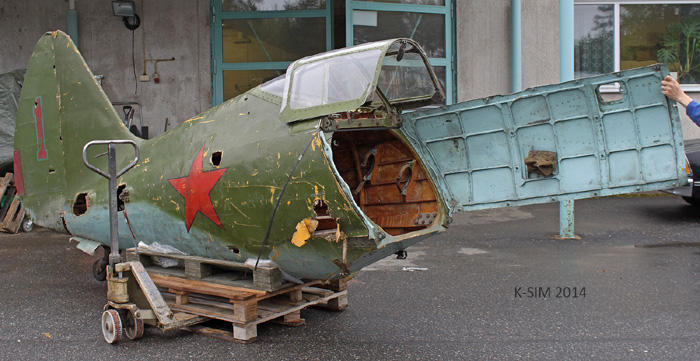
The fuselage from the other side. The color of the number on the tail are better preserved on this side. The light blue shade of the inner side of cockpit side panel is noticeable. The brownish thing on the panel is a fabric cover inside the footstep open on the outside.
Image by Antti Lappalainen at Finnishmuseum, depot of Vesivehmaa
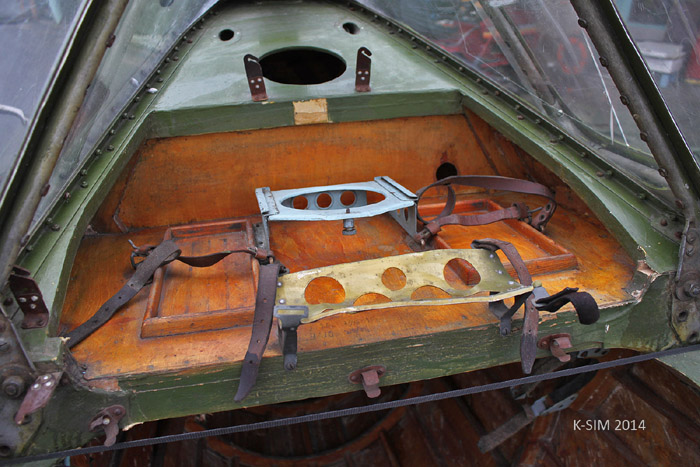
The radio deck is vivid wood color contoured by surfaces painted with AII green.
Image by Antti Lappalainen at Finnishmuseum, depot of Vesivehmaa

The inside of the rear part of the fuselage shows the wood color covered by clear dope. The rudder and elevator rods are missing, but there is still the electric cable for the tail position light and the cables for the tail wheel retraction.
Image by Antti Lappalainen at Finnishmuseum, depot of Vesivehmaa
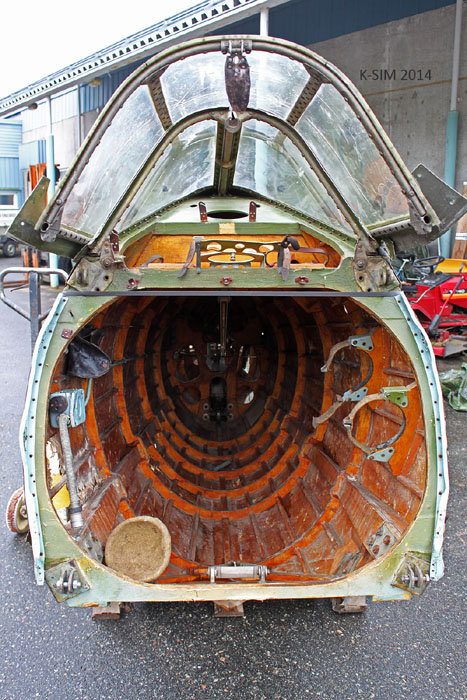
Here one can see the inside of the canopy struts, apparently unpainted. On the right we can see the supports of the compressed air bottle.
Image by Antti Lappalainen at Finnishmuseum, depot of Vesivehmaa
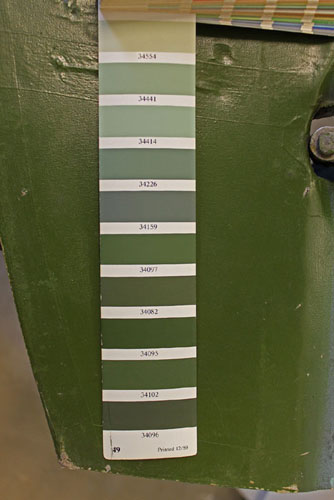
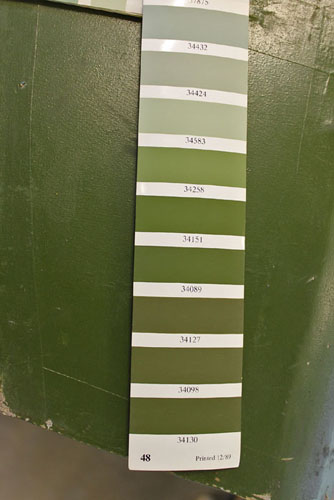
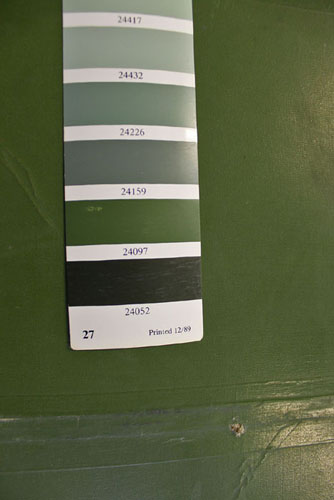
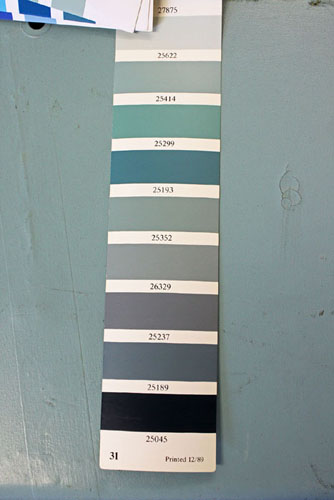

Color comparisons with the help of a FS-595A catalogue of chips.
Image by Antti Lappalainen at Finnishmuseum, depot of Vesivehmaa
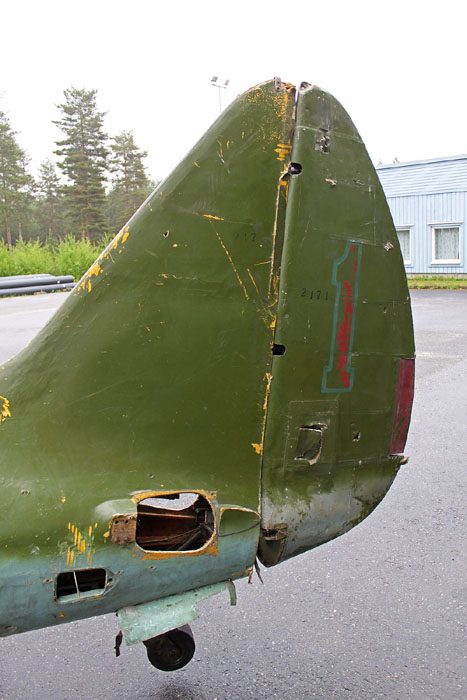
Image by Antti Lappalainen at Finnishmuseim, depot of Vesivehmaa
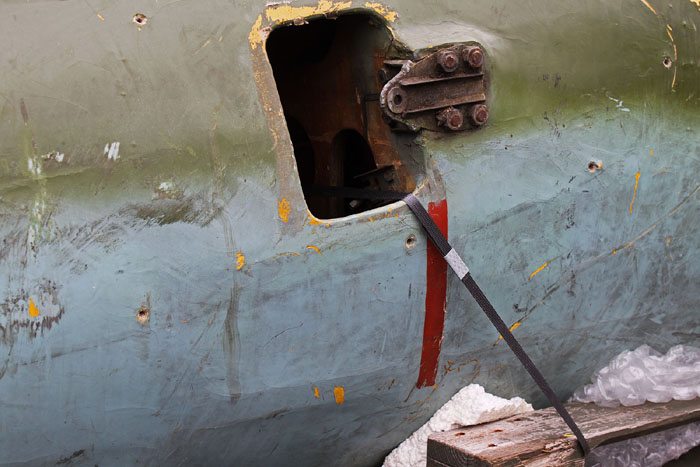
Image by Antti Lappalainen at Finnishmuseim, depot of Vesivehmaa
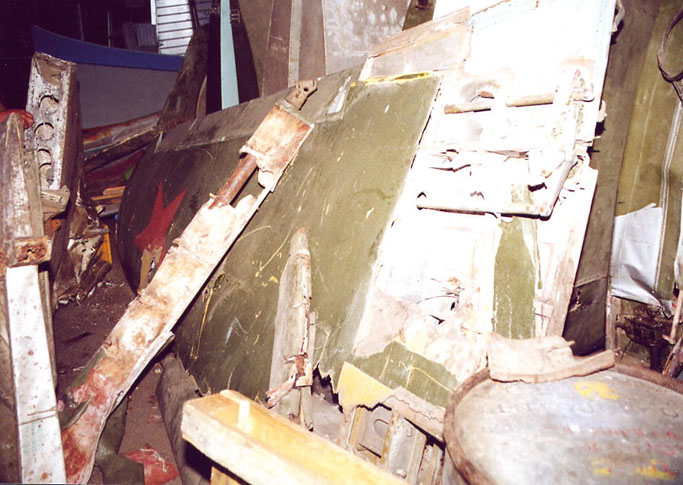
Note the use of yellow putty under the green/blue coat.
The yellow is visible where the paint is scratched, and where the fabric layer covering the wooden surface has been removed by souvenir hunters.
The internal surfaces of wooden structures and of fabric covered metal structures (ailerons, elevators, rudder) have been described as silver, even if they resembles as white on this photo.
The Tikkanoski Finnish Air Force Museum has many wreckages of some shot down MiG-3, forthemost conserved in Veesiveehma depot.
(photos of Thomas Siepert ).

Note the dark red trim.
The closer piece looks from another type of aircraft (it's riveted).

The light blue shade of this wreckage has been described as FS-35352, that is more greyish and greenish than the 35550 given by other sources as the standard AII blue paint.
It's not clear if this discordance is due to age.
On most bw photos of MiG-3s shot during the war, including the photo of red 1, both the light blue and the green on metallic parts appear lighter than on wooden parts.
This was not described on the wreckages in the museum.
The reason of such discordance is still unknown.
It is in excellent conditions, even if the exhaust stacks are deformed and some pieces and minor sub-ensembles are absent:
- supercharger inlet duct;
- max pressure valve;
- oil filters;
- spark plug wires, and most spark plugs;
- generator;
- pneumatic starter under the gear.
More images (forthemost from Kai Mecklin, Museum Director) and comments on this engine can be found in the engine description.
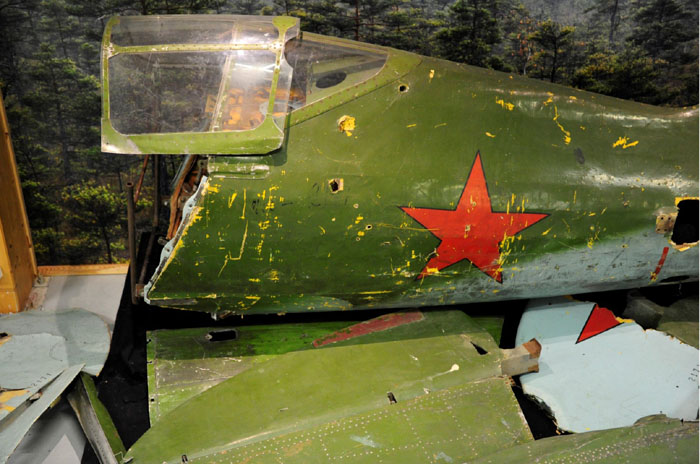
Image of the rear fuselage and canopy.
Image from Antti Kotiranta.
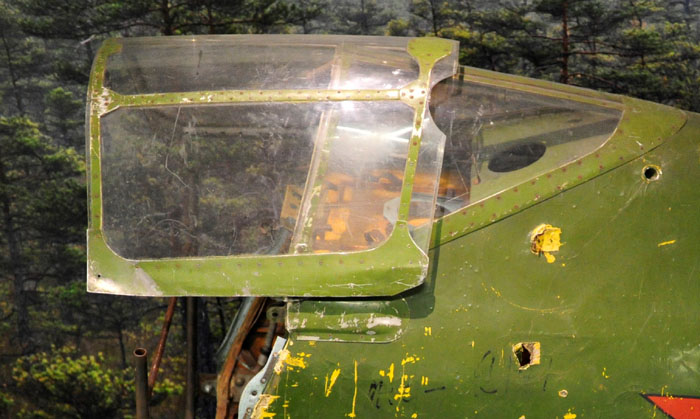
An enlarged detail of the canopy.
The difference in shade between the metallic and wooden parts, very visible on BW photos, is still visible on this color one.
The scratches on the metallic parts don't seem to show any primer.
The plexiglass surface extends outside the frames both forwards and rearwards.
Note the natural wood color of the radio deck, and the yellow putty visible through the scratches on the fabric-skinned wood surface of the fuselage.
Image from Antti Kotiranta.
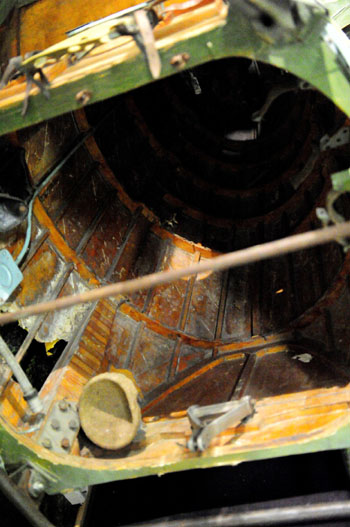
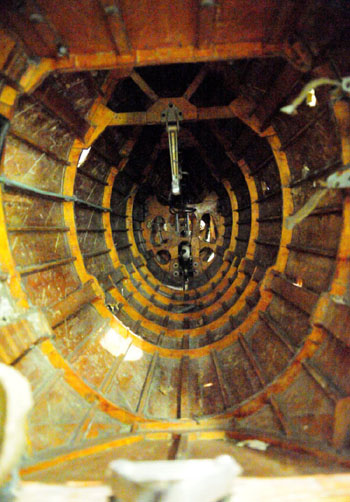
The inside of the rear fuselage was predominantly showing its wood color.
From Antti Kotiranta:
'The rear fuselage is interesting as it is made out of (possibly) pine tree ribs and bulkheads and covered with plywood, most likely made out of birch tree. Inner surface is then covered with a clear lacquer that is applied with a poor quality brush. And the lacquer wasn’t used sparingly! The coat is very thick; especially in every corner, which make them look orange coloured. Also the brush strokes are visible'.
Image from Antti Kotiranta.
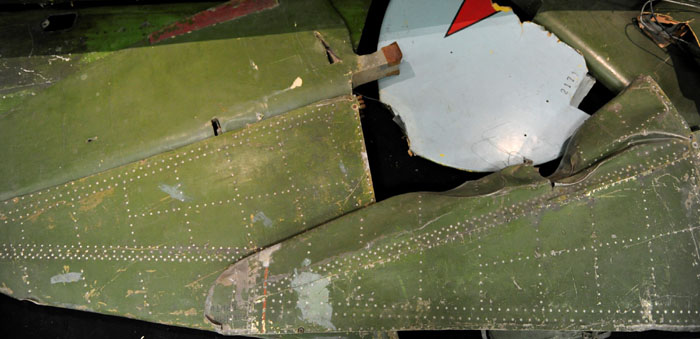
Two images of the tail surfaces. The stabilizators were metallic, while the elevators were fabric-skinned over a metallic strut.
The unusual dull dark red of the trim tab is visible; the same color was used for the number 1 on the rudder (not visible here), contoured by an unexpected light blue-green (not visible here).
Scratches on the paint show what could be a greenish variation of the ALG-1 zinc chromate primer. Seems that the rivets were not primed, so they lost their green paint too.
Some traces of light blue, perhaps the same of the undersurfaces, can be seen.
The photo shows the wingtip of plane 2171.
Image from Antti Kotiranta.